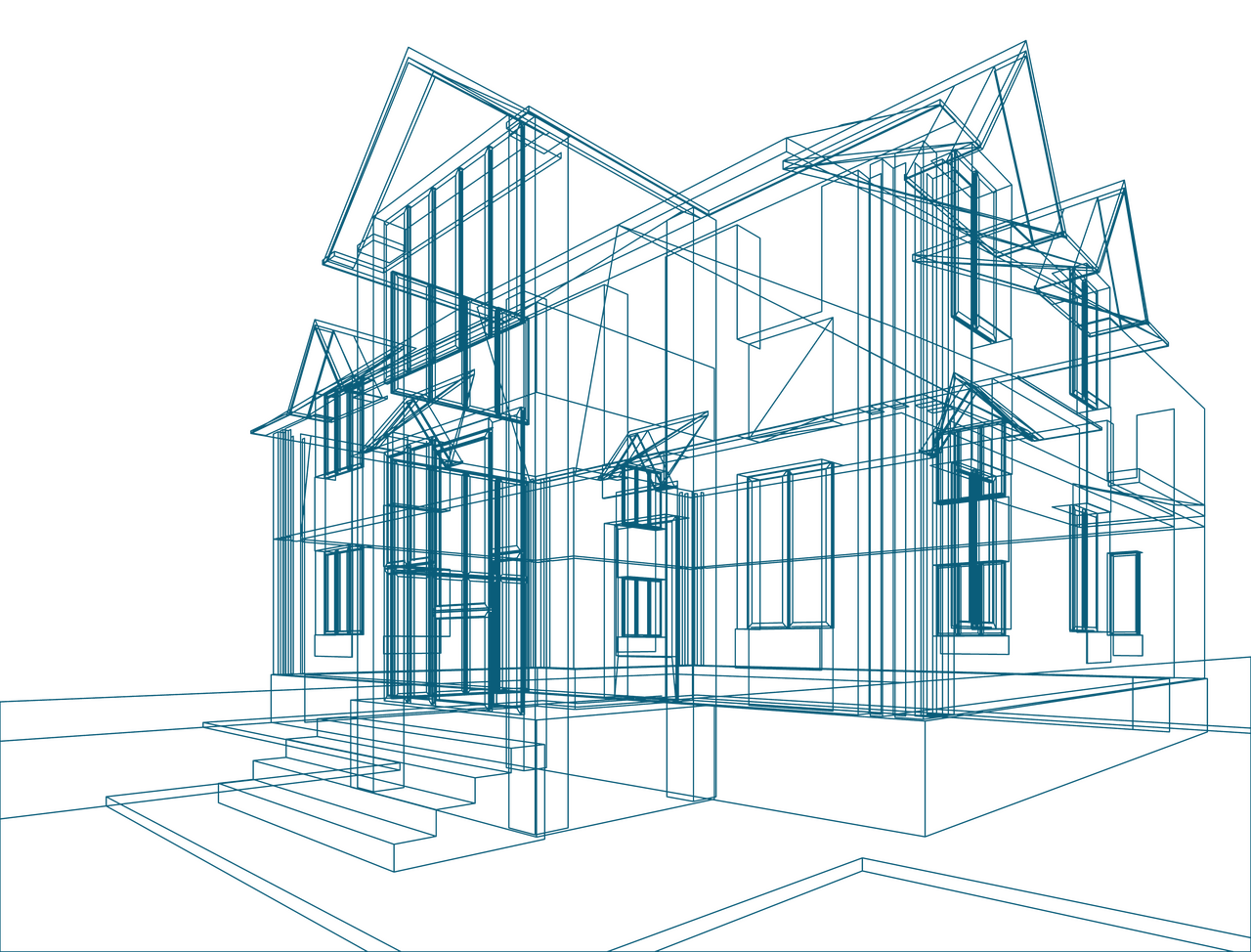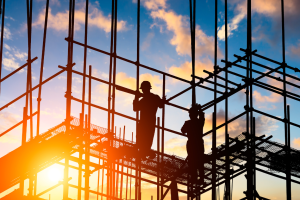

Market report
Sustainability in construction industry
Learn how the construction industry is embracing sustainability. Find insights on reducing waste, using renewable resources, and building a better environment.
Blogs I published 09 June 2025 I Dirk Hoogenboom
5 Trends in the Construction Industry for 2026 and Beyond
The conversations in site cabins, supply chain meetings and architecture studios across Europe are getting deeper. They have less to do with business being up or down and more with what’s likely to outline the sector come 2026, and beyond – the lasting pressures, the viable opportunities, and decisions that need to be made soon.
2024 closed with rattled confidence set on by labor shortages, high material costs, hesitant clients, inflationary pressure and energy volatility. All of this stacked against softening demand and deferred investment. But while the indicators were – to say the least – underwhelming, the story underneath is more nuanced… and for those watching closely, instructive. Let’s look at things from the ground up.
1. Market Overview
The construction sector did not just stagnate in 2024… it shrank. And Europe felt the ripple effect. What varied was the degree of contraction and the relative success in softening the blow. Year-on-year construction volume changes were negative in most major markets: Germany saw a -4.5% development, France followed close with -4.4%, Poland -4.3%, while a few markets remained positive (Italy 0.2%, The UK 1.2% and Spain 2.5%).
The causes were systemic: high interest rates, expensive materials, tight labor markets and geopolitical uncertainty. This impacted new build activity particularly hard, with renovation holding up better due to regulatory and energy-efficiency programs.
Some Tailwinds in 2025
The 2025 outlook improved modestly, but by no means uniformly. Germany, France and Poland are expected to continue further negative developments, while Spain was forecast at 4% growth, Italy 2% and the UK 1%. What can we chalk it up to?
- declining interest rates fueling demand for new builds
- a stronger renovation market
- an uptick in sustainability improvements
- lower material and building costs
- expected increase in government spending
Still, the total 2025 picture is one of moderate improvement, not resurgence.
2. Labor Shortage – A Structural Challenge
Labor pressure isn’t easing, and most construction businesses no longer treat it as a cyclical issue, but a chronic operational constraint. It’s being actively factored into planning, pricing and delivery models. The skills shortage is not speculative. It’s measured and widespread; for instance:
- Germany: 89% of painters and 76% of installers report labor shortages
- Netherlands: 69% of architects and 67% of contractors
- Italy: 47% of painters, 37% of installers
Underlying this deficit? A harsh demographic reality. Only 21% of the workforce is younger than 42, and over 54% are Gen X or Baby Boomers. So the side-effects are compounding:
- cost impact – hourly rates are climbing, adding cost pressure to already expensive builds
- capacity bottlenecks – longer lead times and reduced flexibility to scale production
- productivity drag – a skills mismatch and rushed onboarding of less-experienced workers reduce overall efficiency
- innovation slowdown – high work pressure forces short-term focus (meaning less capacity to invest in training or systems change)
But it’s not all downhill. There’s a growing uptake in mechanised solutions (robotics, automation, AR and AI, mechanical spraying and printing). Demand for prefabricated systems is rising as a means of de-risking site works. Contractors are offering paid training and formalising onboarding in order to rebuild the workforce. So the market may not be correcting itself, but that’s changing how projects are scoped, staffed and delivered.
3. Prefab – Still A Safe Bet
Prefab adoption flattened due to a slowdown in new build permits, not because of lack of interest or benefit. As new builds fell off, so did the opportunity to use it at scale. Architects using prefab? They report 2021’s 28% moving to 33% in 2025, while contractors report a humble rise from 2024’s 24% to 2025’s 27%. Meaning? It’s trending upwards, and this pause isn’t a plunge, but a short-term dip. Long-term, the logic behind prefab is getting stronger.
Labor shortages are forcing contractors to look for faster, more resource-efficient methods. Prefab answers that call. The labor benefits alone make it attractive, especially as onsite skill shortages get worse. Prefab can help simplify delivery, control costs and reduce time on site. Today, it’s mostly working with basic elements – panels, sections, and standard modules. More advanced forms like plug-and-play systems and fully volumetric units remain underused mainly because of complexity, design limitations and logistical concerns.
Use remains strong in markets like the Netherlands (47% of architects, 42% of contractors), Belgium (46% of architects, 32% contractors) and Spain (close to 30%+ of total projects). France and the UK, however, are lagging behind.
The upside is hard to ignore:
- prefab methods can reduce construction material waste by up to 90% compared to traditional onsite building
- wood-based prefab solutions are growing rapidly, especially among architects
- higher levels of industrialization are expected to boost efficiency, scalability and environmental performance
4. BIM and Digital Adoption Plateauing
For years now, BIM has been pitched as a solution to coordination headaches, waste and inefficiency in the construction process. But the reality is more nuanced than the headlines: yes, it’s widely recognized. Yes, it’s in use. But not always at its full capacity.
Architects have largely adopted BIM, with 45% of them using it regularly. But tread one step outside of the design teams and the numbers drop fast. A mere 10% of contractors and less than 11% of installers are on board. Which – for a tool that promises to unify stakeholders – still feels pretty siloed.
Company size also matters. Nearly 76% of larger firms (with 40+ employees) are actively using BIM. But among the thousands of microfirms – only 32%. That means BIM isn’t just underused – it’s unevenly distributed, and those that could benefit most from it often don’t have the capacity to implement it.
Real Gains… With Room to Grow
The irony here is that when BIM is used effectively, it clearly delivers. For architects, 52% of turnover now comes from BIM-enabled projects; for contractors, it’s 45%. Meaning, the gains are real – improved coordination, reduced errors, fewer clashes and tighter project control.
However, this is exactly where the “how” comes into play. Most companies stick to the basics when using BIM: drawing 2D plans from 3D models (89%) or basic visualisation (82%). The more powerful functions are hardly put to work: 4D planning is at 32%, 5D cost simulation at 31% and sustainability modelling barely over 40%.
So what’s the real issue? It’s not the software. It’s training. It’s culture. It’s the project structure. BIM can do more than coordinate design – bring together pricing, logistics, sustainability and post-handover performance – but that requires firms to stop thinking of it as a drawing tool and start treating it like a platform for how they plan and deliver work.
5. Sustainability – Going Green?
Sustainability has become a default talking point: it’s on the tender documents, in client pitches, on grant specifications and packaging. But when it comes to execution – and more importantly, investment – there’s little to no follow-through.
Common Goals and Contrasting Realities
In leading markets like the Netherlands, 71% of firms report being actively involved in sustainable construction. The UK reports some 65%, with Germany, Spain, Belgium showing similar momentum. But look at Poland, however – and you’ll notice a striking drop to 24%. Awareness is not the issue. Execution is. Investment gaps can fill in the blanks of the story.
Back in 2020, 34% of projects that included sustainability features actually had the budget to deliver them. By 2024, that fell to 27%, and the forecast for 2030 continues to drop, to just 22%. Couple that with an expected rise in sustainable projects, the result is clear: firms are increasingly expected to deliver on sustainability goals without a matching increase in funding.
Material Shifts Leading the Way
Where sustainability is gaining real ground is in material choice. Practical, lower-carbon materials are moving into regular use:
- bio-based insulation: 18%
- solar panels: 15%
- recycled/reused content: 14%
And the next five years show clear momentum in the same direction: wood façades are expected to increase by 25%, natural insulation by 37%, and carbon-heavy materials like PUR/PIR foam and HPL are projected to drop by 4% and 22% respectively, with a notable decrease incoming for polystyrene foams -33%
The more forward-looking techniques are both recognised and rare in practice – like urban mining (56% aware, but only 10% using) or material passports (70% aware, 18% using). But the pressure to deliver greener buildings isn’t going away. Regulatory changes will make some choices mandatory. Clients will start asking tougher questions. You’ll have to keep up.
Conclusion
As far as construction is concerned, 2025 won’t see any wild swings – it’ll sooner be coming to terms with some hard truths and softening their blow.
Labor shortages aren’t going anwywhere. Instead, firms need to bake automation, prefab and targeted training into their toolset. BIM and digital tools can deliver real efficiency and cost control, but only when companies invest manpower and time into the processes. Sustainability is a baseline requirement, but it has to come through realistic budgeting and strategic prioritization.
This all translates to smarter project scoping, tighter coordination, better use of tech and realistic financial planning. In other words – knowledge. So, if you want a closer look at the trends or need data specific to your market – check out USP’s reports, tailored to every link in the construction chain.




